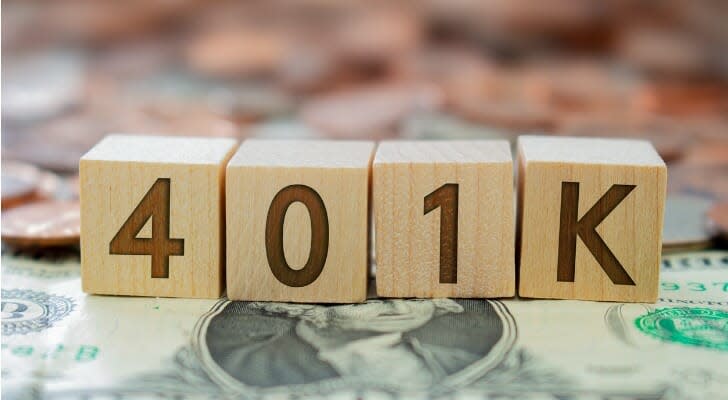Does Rebalancing Your 401(k) Cost Money?
When you first opened your account, you hopefully thought long and hard about how to allocate your money, putting a certain percentage towards riskier stocks and other money towards safer investments like bonds.
But have you thought about rebalancing since then? Over time, those original asset allocation percentages have probably changed. As you continued contributing to your retirement account and the market has gone up and down, you may not have realized that your portfolio is not as diversified as it once was. That’s where rebalancing comes in.
A financial advisor could help you evaluate your retirement plan’s performance and help you select investments that align with your financial goals. However, if you’d like to do it yourself, read on for a place to start.
What Is Rebalancing?
Technically speaking, rebalancing your 401(k) is the process of realigning the weights of assets in your portfolio. This is done by periodically buying and selling assets, or investments, in order to maintain the original percentages of your asset-allocation profile.
Experts recommend rebalancing at least annually, with a maximum of four times a year. Since investing can sometimes prove emotional–especially during volatile periods–it’s best to rebalance on a set schedule in order to keep your allocation decisions as unaffected by emotion as possible.
Why Should You Rebalance Your 401(k)?
Most of the time when you enroll in a 401(k) or similar defined contribution plan, you decide on a target asset allocation depending on your risk tolerance profile. This may change as you earn more and grow closer to retirement, so it’s important to review your portfolio at least once a year.
Let’s say Anne is in her early 30s and set up her 401(k) with an 80% stocks, 20% bonds allocation. In this vastly-simplified, hypothetical situation, at the end of Year One, she’s saved $10,000: $8,000 go towards stocks and $2,000 towards bonds.
After another year, she’s continued contributing to her retirement fund and the markets have performed well. At the end of Year Two, she has $23,933: $19,733 in stocks and $4,200 in bonds. Now her asset allocation percentage is 82.5% stocks and 17.5% bonds.
Imagine the stock market suddenly falls like it did as a result of the COVID-19 pandemic. If Anne doesn’t rebalance her 401(k) every year, maybe three, four or even five years have passed since she set up her retirement account and her asset allocation percentages have risen to 92% stocks and 8% bonds. When the stock market falls, she’ll potentially suffer losses to which she didn’t even know she’d been exposed. To rebalance, she’d need to sell some stocks and buy bonds to return to her desired 80-20 allocation target.
Note that rebalancing your portfolio is not the same as reallocation. Reallocation is the term for changing the percentage of invested assets depending on how much risk you want to take. Rebalancing is selling and buying assets to remain in the same percentage ranges. If your allocation percentages are off target by 5% or more, you should strongly consider rebalancing. Allocation targets should also be evaluated annually to make sure that your investments continue to align with your risk tolerance.
Don't miss out on news that could impact your finances. Get news and tips to make smarter financial decisions with SmartAsset's semi-weekly email. It's 100% free and you can unsubscribe at any time. Sign up today.
How Much Does Rebalancing Your 401(k) Cost?
In general, rebalancing your 401(k) doesn’t cost you anything. You are selling your own assets and buying new ones, and most investment options included in your 401(k) do not incur a transaction fee. Trades that do incur fees are usually listed in an obvious manner. If you choose to buy such assets, make sure you account for the added costs of buying and selling them. Note that some plan managers may not allow you to trade assets too frequently.
Since a 401(k) is a tax-advantaged retirement account, you won’t need to worry about paying taxes on the amounts you earn when you rebalance your portfolio. You’ll only pay income taxes on your 401(k) money when it comes time to withdraw during retirement.
If you have a target-date retirement fund, you may not even need to manually rebalance. Many plan administrators have rolled out accounts that automatically rebalance in order to stay within your desired asset allocation range. Target-date funds not only rebalance, they also reallocate as you age.
Bottom Line
Financial experts recommend rebalancing your 401(k) at least annually. Rebalancing your portfolio ensures that your asset allocations remain within your desired ranges and continue to align with your risk tolerance level. It rarely costs you anything to rebalance your 401(k), especially if you buy no-fee funds, and if you have a target-date retirement account, you may not need to manually rebalance at all.
Retirement Planning Tips
Not sure if your target asset allocation will set you up for a smooth retirement? For a solid, long-term financial plan, consider speaking with a qualified financial advisor. SmartAsset’s free tool matches you with up to three financial advisors who serve your area, and you can interview your advisor matches at no cost to decide which one is right for you. If you’re ready to find an advisor who can help you achieve your financial goals, get started now.
Use SmartAsset’s free retirement calculator to get a good first estimate of how much money you’ll need to retire.
Photo credit: ©iStock.com/Marvin Samuel Tolentino Pineda, ©iStock.com/peterschreiber.media, ©iStock.com/kupicoo
The post Does Rebalancing Your 401(k) Cost Money? appeared first on SmartAsset Blog.



